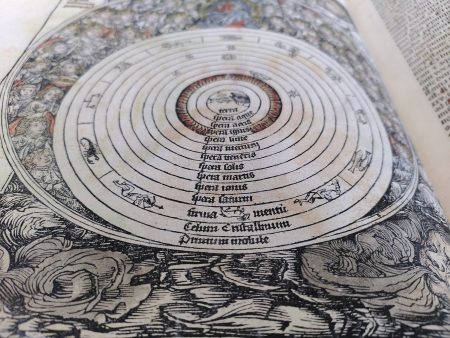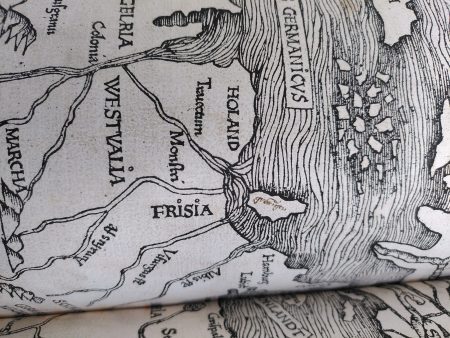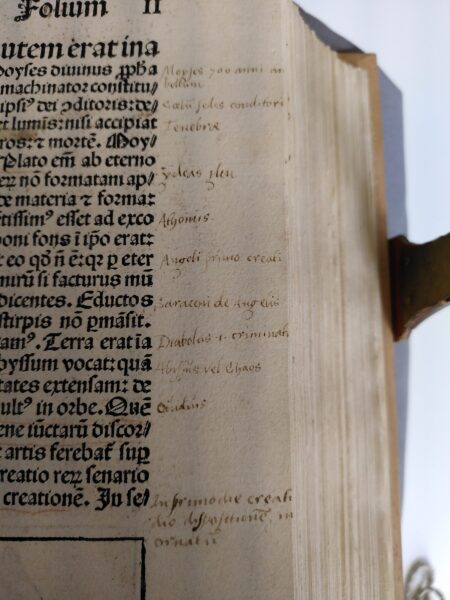The Bartholomeuskerk here in Noordlaren, built in the late-twelfth and early-thirteenth century, has always played an important part in the area. The church is also known for its lavish paintings, including a two-metre high painting of Christ and the Apostles from the thirteenth century. Unfortunately, these paintings have been heavily damaged by brickwork that was added later. However, at the end of the fifteenth century, when Rodolphus Kannegheter was a priest here, they were still intact.
Rodolphus Kannegheter came from a family of clergymen and, like his ancestors, he was very active in the community. For one thing, he was a member of the prestigious society of Kalands Brethrenin Groningen. He was also the proud owner of the book Liber Cronicarum, also known as the Nuremberg Chronicle.
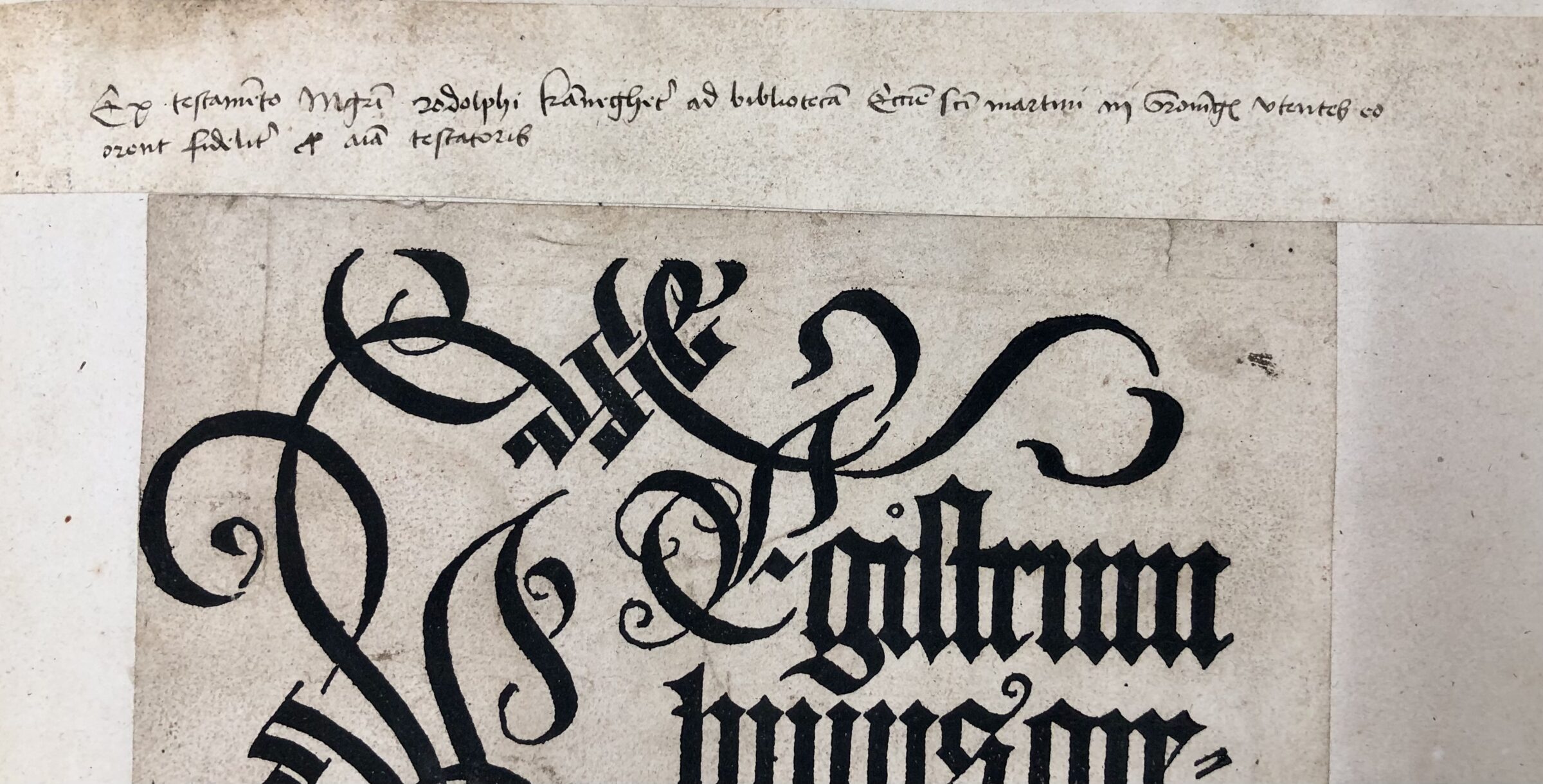
This world chronicle was written by Hartmann Schedel, a physician from Nuremberg with a broad interest in art and science. It was published in 1493. The aim of the book was to describe the history of the world, followed by the Apocalypse, based on Christian eschatology.Schedel collaborated on this with a team of artists and scholars.
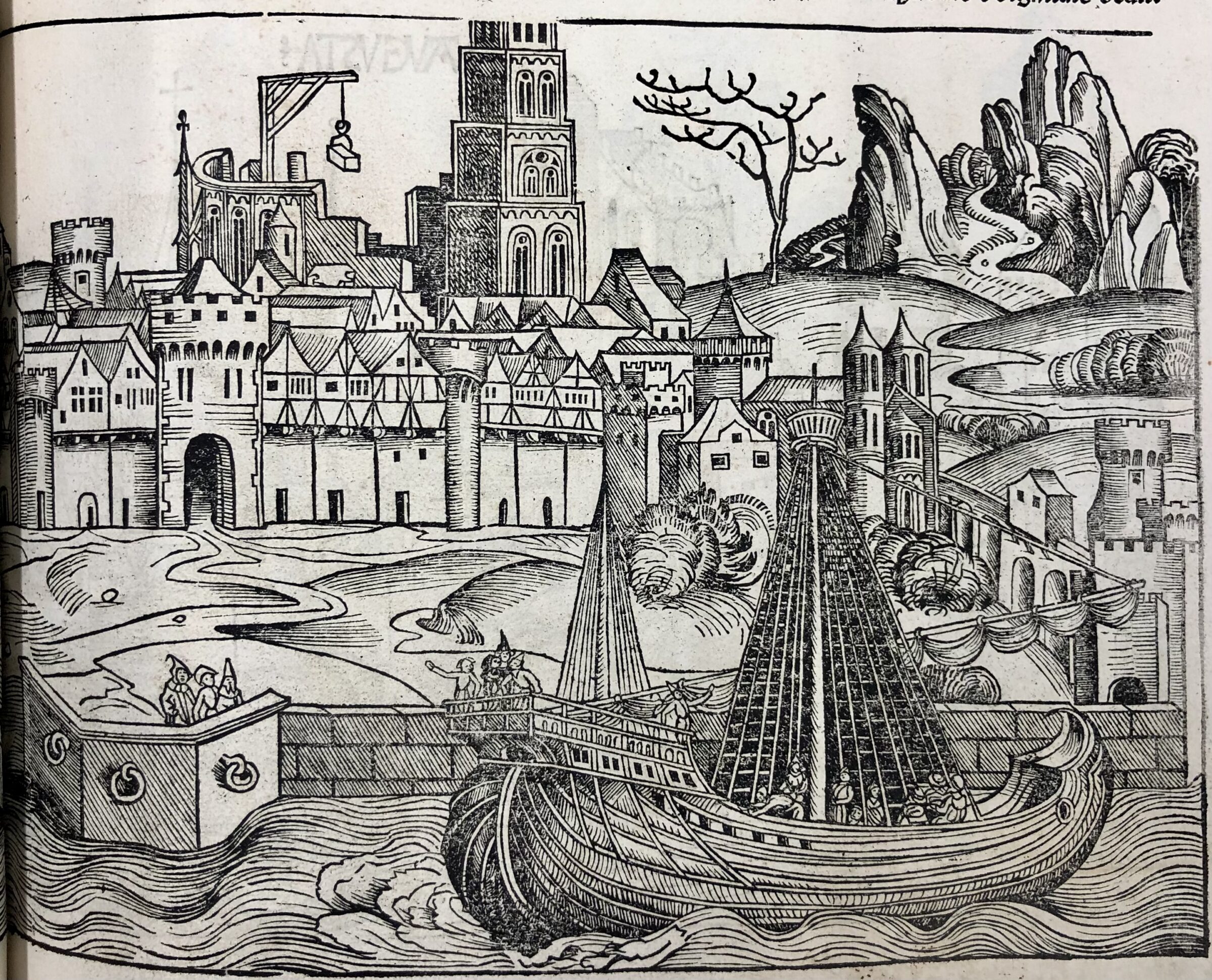
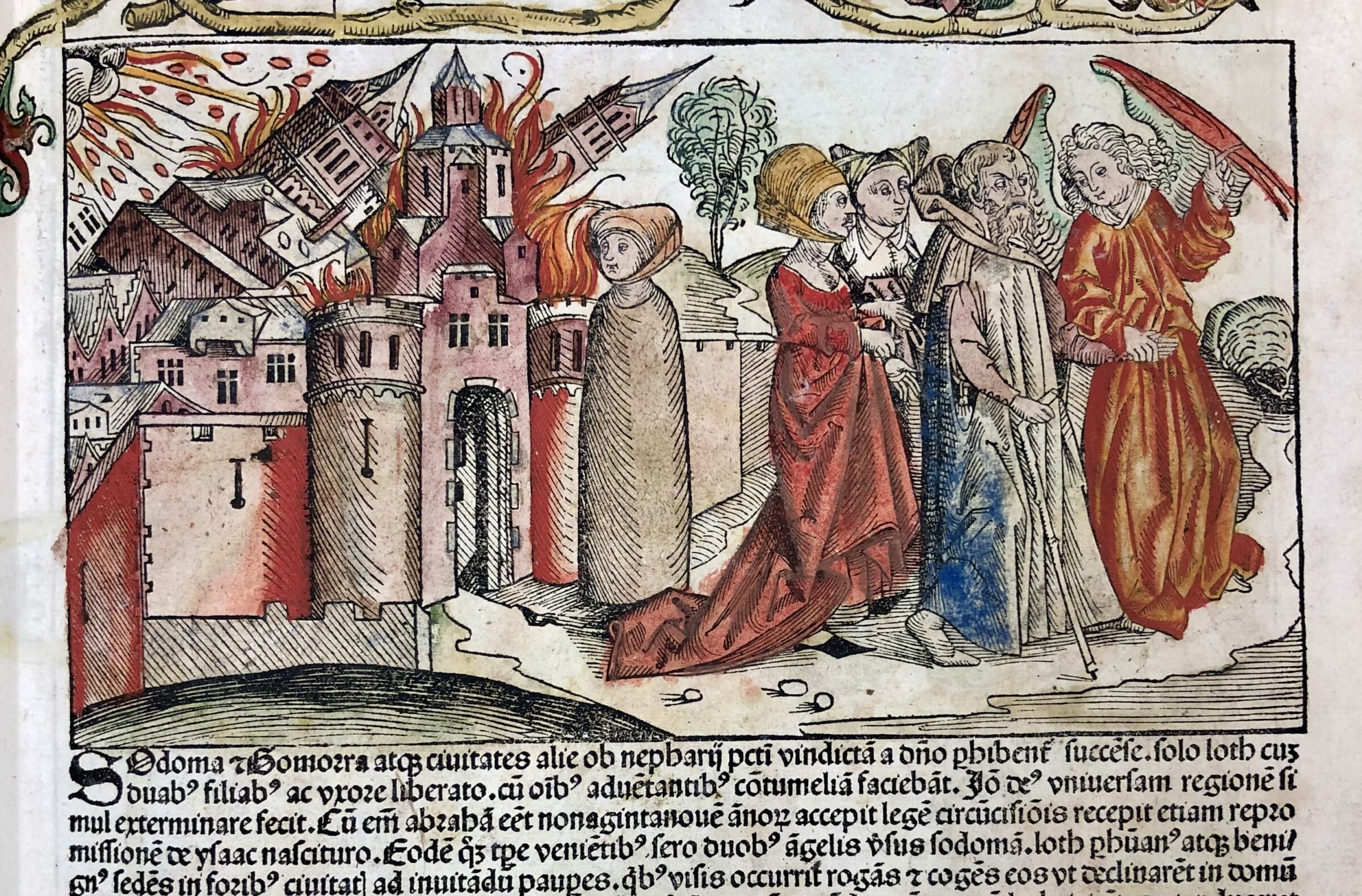
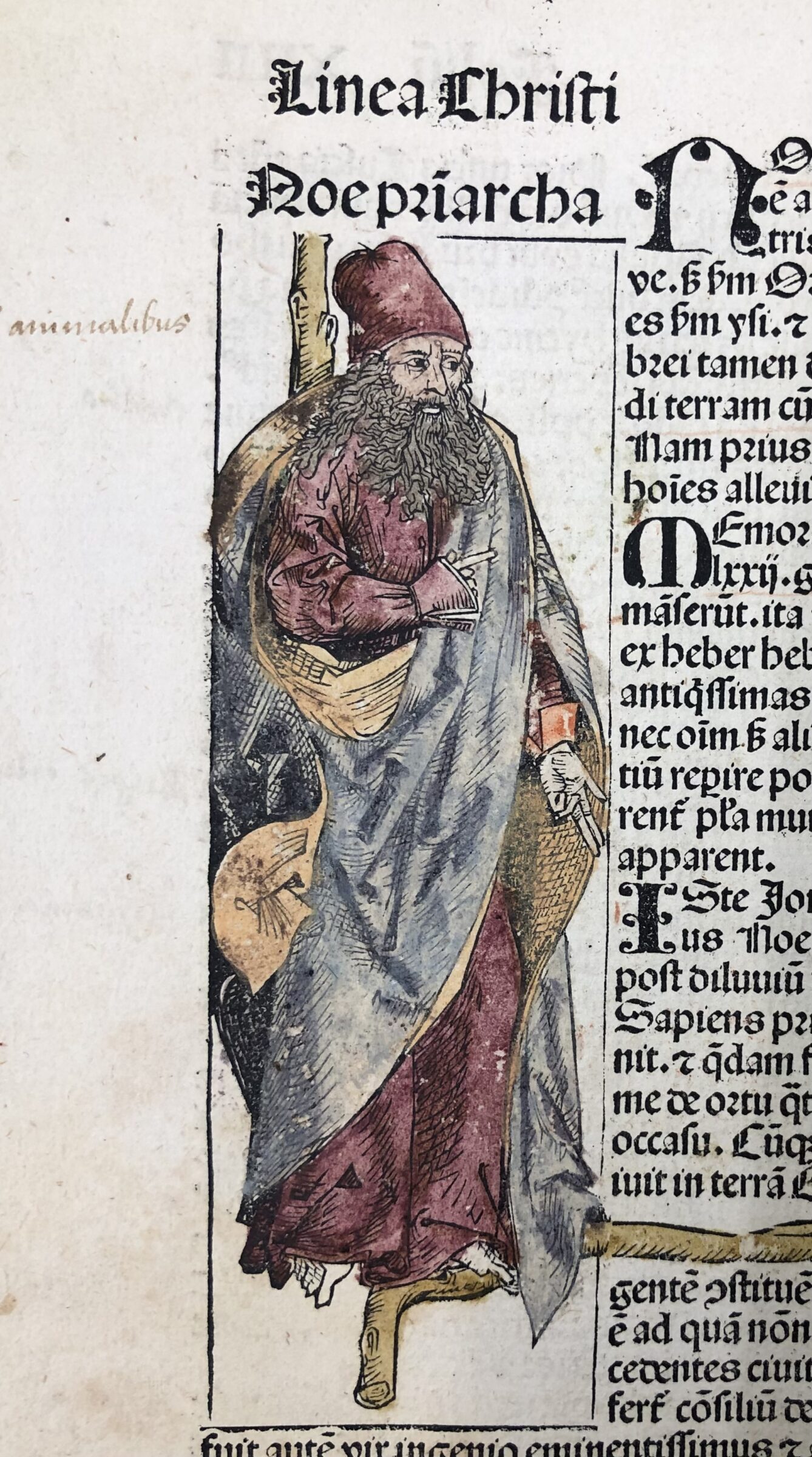
The book was printed in Nuremberg by Anton Koberger, one of the most successful printers in Germany, and it became a bestseller. The pages of this world chronicle are decorated with hundreds of illustrations in black and white, made using woodcuts.At the time, this made it the most illustrated book in the world. One example is the Danse Macabre, the Dance of Death, a theme often used in medieval art. We see five skeletons, three of which are dancing happily while the fourth is playing an instrument and the fifth is just crawling out of its grave. This illustration is still very popular and is even printed on T-shirts.
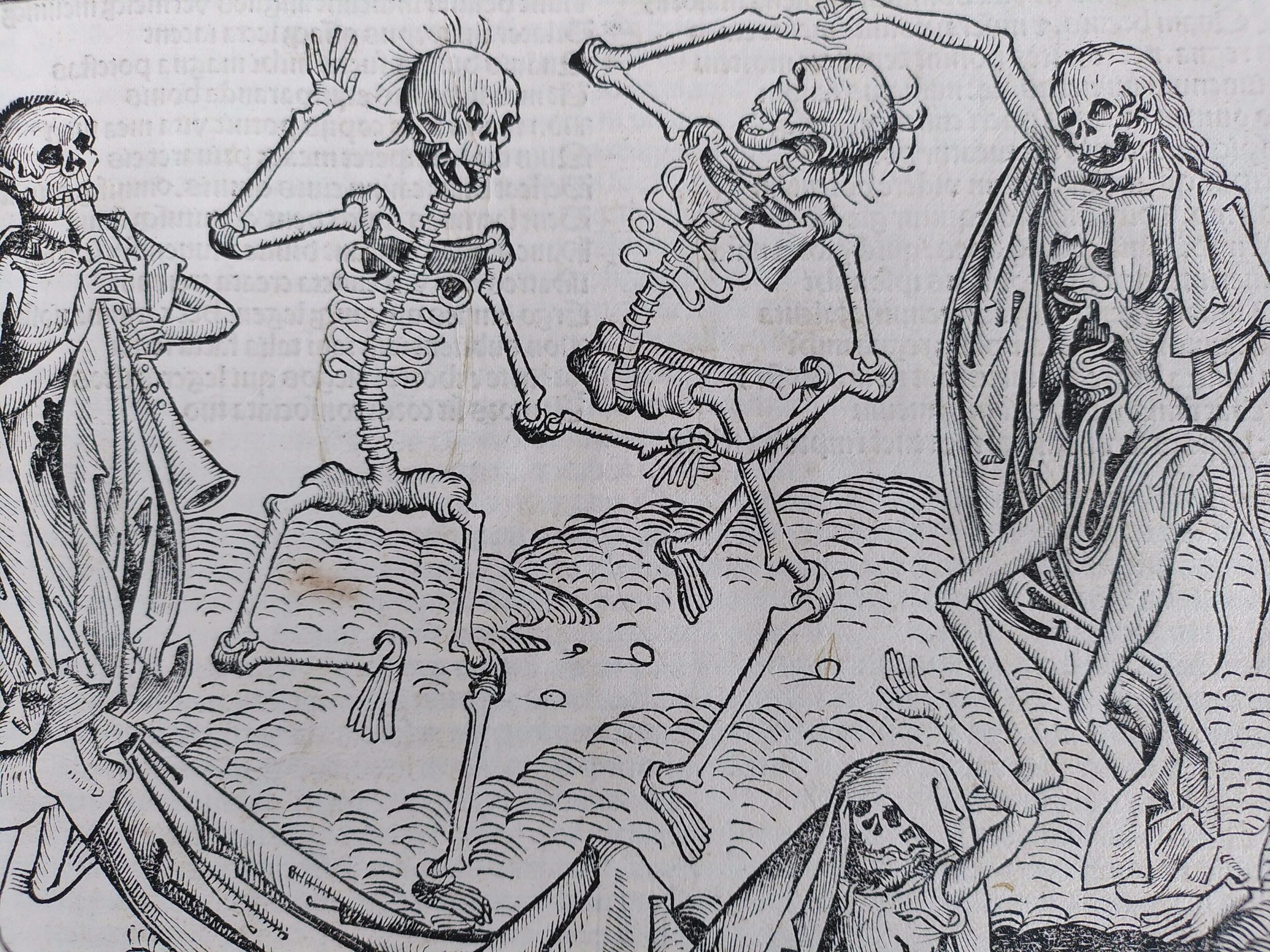
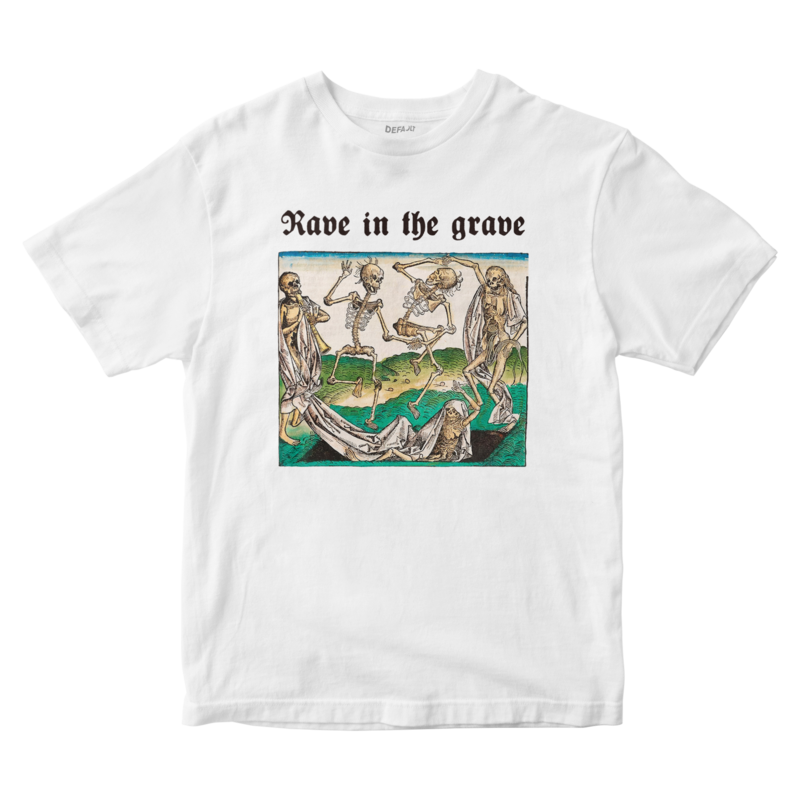
In our copy, the illustrations at the beginning of the book have been hand-coloured, but the later illustrations are in black and white. Maybe a bookseller commissioned the colouring and it was never finished. Or maybe one of the earlier owners of this copy started it? The copy also contains lots of notes in the margins and some phrases have been underlined: Angeli primo creati (The angels were created first) is written in one of the margins. Also remarkable is the world map at the back of the book. It includes the current territory of the Netherlands, with a small island printed above it, which is marked ‘groningen’ by hand. Maybe Kannegheter, who was from Groningen, added the name? It is also possible that it was added by another, as yet unknown, owner. In the front of the book the phrase anno domini 1500 is written, possibly by someone who owned the book before Kannegheter.
After Kannegheter’s death in 1506, the book was legated to the library of the Martinikerk, which may have acted as the municipal library at the time. In the library, it was probably mostly used by clergymen. In this library, books like these were put on a chain: one end of the chain was attached to the book cover and the other end to a bookcase, to prevent people from taking books with them. Later, the book was owned by Jacob Canter, but it is unknown how it ended up in his possession. Maybe Jacob was the one who made the notes. We do know that he gave the book to Julius Schelto van Aitzema in 1683, who is depicted prominently in a painting in the Dokkum town hall. Van Aitzema died in 1714. In 1758, this world chronicle is first mentioned in the catalogue of the University of Groningen Library.
Author: Kjelda Glimmerveen

